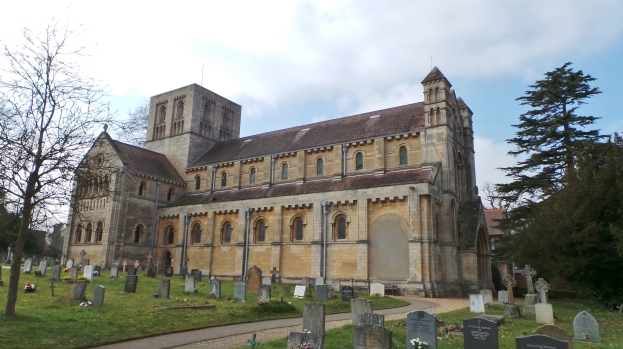Risk Assessment Guidance
 Introduction to Risk Assessments
Introduction to Risk Assessments
Under Health & Safety legislation, it is a legal requirement to conduct Risk Assessments for our premises and our activities, to ensure parishioners, visitors and clergy are kept as safe as possible. We are unlikely to do anything that is “High Risk” but there are still hazards on the premises, with loose chairs, small sets of steps and heavy doors. With many elderly parishioners, a fall can be very serious.
It is important to remember that this process isn’t intended to prevent things happening but rather to ensure we do them in the safest way possible. The assessment also provides a record which can, and must be shared, so that everyone involved knows the risks and what they should be doing, to keep themselves and others safe.
Risk Assessments do not need to be complicated but they can be a bit daunting if you haven’t done one before. The best way is to think of them is as “applied common sense” – and to remember that common sense is not that common! The following notes should help you, and there is a completed form to give you an idea of what is required. This form can be adapted to suit the activity you are considering, and it does show some of the most common headings that you might need for your own activity.
Purpose
The purpose of a Risk Assessment is help you review a planned or actual activity and decide –
- Should it be done here at all – or is it just too dangerous?
- If we should do it here, what are the risks involved?
- Can these risks be removed or reduced with training or written procedures?
- Can we mitigate the effects of unavoidable risks, e.g. by providing PPE?
- How do we deal with any resulting injury or damage? Is First Aid available?
- Will we limit damage or further injuries by calling the Emergency Services?
It can help to consider those questions in the order given above; if we can avoid the task or remove the risk, we won’t have to cope with the results of an incident! Once you have decided to go ahead, you need to look at the event/activity and think how someone could be injured. Identify any remaining unavoidable hazards, and jot them down. And then go on to consider what changes or improvements you would recommend.
Example
Let’s take the simple example of having Tea and Coffee served in the Hall after Mass. There would be manual handling risks to people setting up the tables and bringing the crockery and urns etc in from the kitchen area. There would be a trip hazard while carrying the goods, or not seeing a chair left out of place or using extension leads. There could also be a risk of a table collapsing on a child or breaking someone’s foot. We are serving food and drink, so hygiene must be considered, too. And in the hall, there is always the risk of fire.
The next step is to think of what we do now, and how we could do it differently to remove or minimise the risk. For example, have two people to set up the tables; have people holding doors open while moving goods; ensure tables are in good condition; avoid extension leads across walkways; put fire precautions in place.
In terms of prevention, we could give manual handling training to volunteers (which includes telling them to check the route and remove trip hazards). We could train them in erecting the tables correctly and checking their stability. We would need to give someone the job of checking that the floors are kept clear during the event. These things should be noted on the form, together with the name of the person to carry them out. Somethings – like checking the floor – must be done every Sunday, but others like the training, only once.
If we make recommendations for change – eg training colleagues – we need to identify who is going to do something about it. And we need to monitor the situation to ensure it actually achieves the improvement we wanted. So, for on-going activities, the assessment needs to be reviewed every year.
Conclusion
To help you further, click here to see two attachments First is a sample of a completed Risk |Asasessment – based on our example above, the “Provision of Tea and Coffee in the Hall after Mass”. And then there is a blank proforma which you can adapt to suit the circumstance of your own activity or event.

Completed Risk Assessments must be sent to the Health & Safety Co-ordinator who is able to provide advice if needed.
The Co-ordinator – or the website editor – can also supply Risk Assessment Forms if the ones on the website prove impossible to print properly – we know there is a problem with doing that – please accept our apologies!
